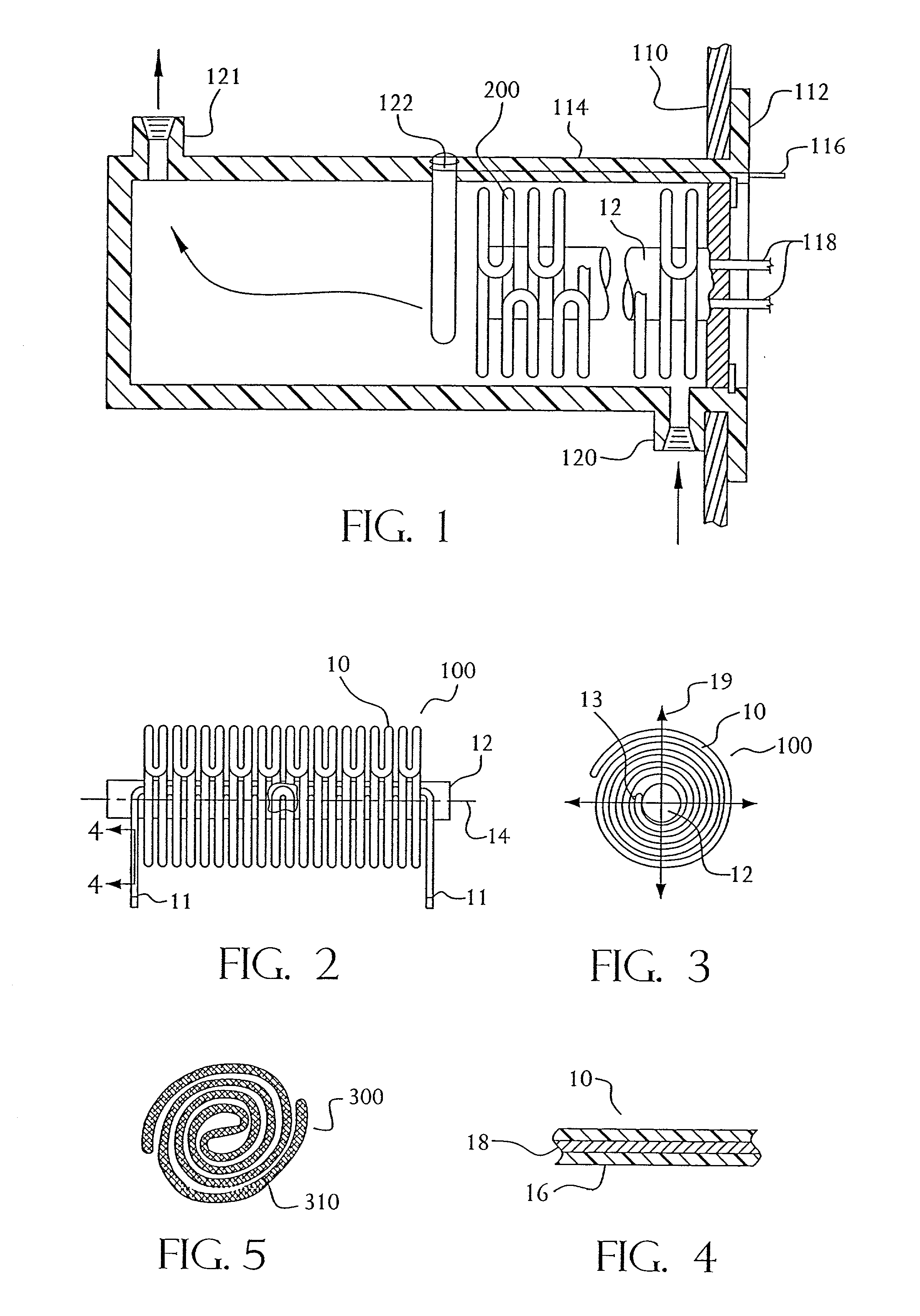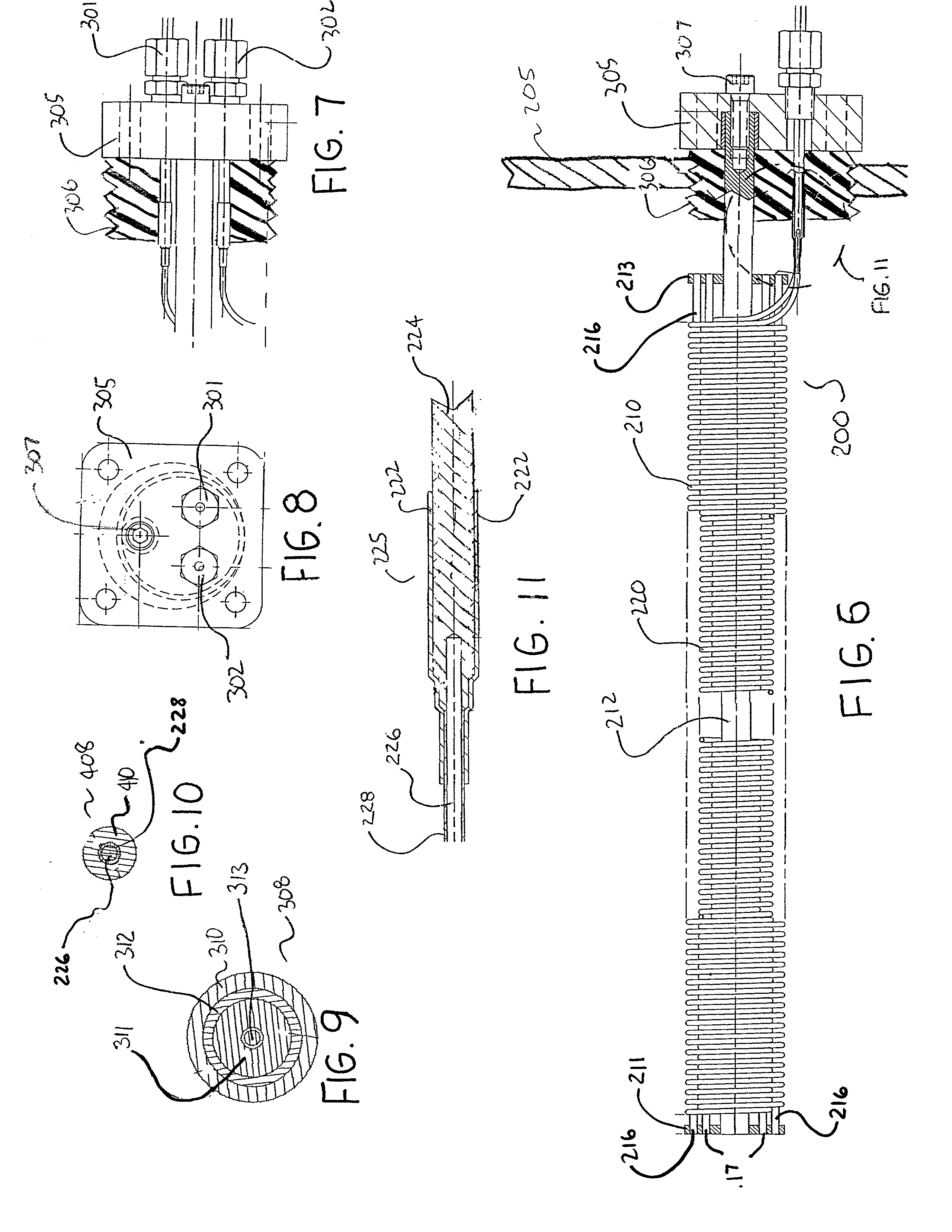Small diameter low watt density immersion heating element
a heating element and small diameter technology, applied in the field of electric resistance heating elements, can solve the problems of reducing the watt density of the element, slowing the growth of scale, and not reliably eliminating scale from all areas of immersion heaters, so as to reduce the heat flux, slow down the growth of scale, and reduce the heater surface temperature
- Summary
- Abstract
- Description
- Claims
- Application Information
AI Technical Summary
Benefits of technology
Problems solved by technology
Method used
Image
Examples
examples
[0084] FIG. 12 graphically represents the measured temperatures along the wire, sheath and scale in relation to scale outer diameter ("O.D.", inches) and watt density (W / in.sup.2) for a 0.315" O.D., 80.67 W / in.sup.2 tubular heater 308, shown in FIG. 9. The tubular heater had a NiCr coiled wire core 313, granular MgO insulation 311, and a metal sheath 312. Scale 310 developed quickly on its surface. Also tested was a 0.069" O.D., 30 W / in.sup.2 fluorocarbon coated 0.051" dia. Chromel P (NiCr) wire heater 408, shown in FIG. 10, which also developed scale 410. Both heaters ran at the normal power density for a 4,500 watt heater.
[0085] FIG. 12 was plotted from the following data:
1 0.315 dia. tubular: Tubular Tubular Tubular Tubular Tubular Scale Wire Sheath Scale OD Scale Thickness (in.) Temp. (.degree. F.) Temp. (.degree. F.) Temp. (.degree. F.) OD (W / in.sup.2) 0 1187 235 235 80.67 0.02 1268 315 228 71.57 0.03 1305 353 226 67.75 0.05 1375 422 222 61.22 0.07 1438 485 218 55.84 0.1 1523 5...
PUM
 Login to View More
Login to View More Abstract
Description
Claims
Application Information
 Login to View More
Login to View More - R&D
- Intellectual Property
- Life Sciences
- Materials
- Tech Scout
- Unparalleled Data Quality
- Higher Quality Content
- 60% Fewer Hallucinations
Browse by: Latest US Patents, China's latest patents, Technical Efficacy Thesaurus, Application Domain, Technology Topic, Popular Technical Reports.
© 2025 PatSnap. All rights reserved.Legal|Privacy policy|Modern Slavery Act Transparency Statement|Sitemap|About US| Contact US: help@patsnap.com



